By Chryshane Mendis
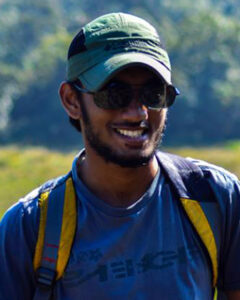 The harbour of Kolon Thota or Colombo was a prominent port in ancient Sri Lanka and from the 15th century onwards it was the principle port of the country due to its proximity to the Capital city of Kotte. With the arrival of the Portuguese in the 16th century, they made Colombo their main center establishing a large city over time. The succeeding European colonists, the Dutch and British too made Colombo their center. To protect their interests in the harbour the Portuguese fortified their city and the harbour creating the Fort of Colombo; the succeeding Dutch too erected their own fortifications on the site of the Portuguese ruins. The British after occupation maintained the Dutch fortifications till the mid-19th century where they were demolished for commercial expansion of the city. The Fort of Colombo has a colourful history of almost 500 years and the final fortifications; the Dutch Fort was demolished in the 1870s but not entirely as I found out.
The harbour of Kolon Thota or Colombo was a prominent port in ancient Sri Lanka and from the 15th century onwards it was the principle port of the country due to its proximity to the Capital city of Kotte. With the arrival of the Portuguese in the 16th century, they made Colombo their main center establishing a large city over time. The succeeding European colonists, the Dutch and British too made Colombo their center. To protect their interests in the harbour the Portuguese fortified their city and the harbour creating the Fort of Colombo; the succeeding Dutch too erected their own fortifications on the site of the Portuguese ruins. The British after occupation maintained the Dutch fortifications till the mid-19th century where they were demolished for commercial expansion of the city. The Fort of Colombo has a colourful history of almost 500 years and the final fortifications; the Dutch Fort was demolished in the 1870s but not entirely as I found out.
Having read much about the Dutch Forts of Sri Lanka, I was determined to explore the untold story of the Fort of Colombo beginning from its inception from the time of the Portuguese, for as common knowledge goes no remains exist. This journey took me on an adventure of a life time, I felt like a modern day Howard Charter to the surprises that awaited me in that busy city center called Colombo 01. There hidden amoung the crowded streets of Fort are the hardly known remains of the name-sake of Colombo 01, the very ruins of the Dutch Fort of Colombo. This is the remarkable story of their rediscovery.
Strolling through books of history I came across a picture which took me quite by surprise, in the book The Epic Struggle of the Kingdom of Kandy by Brendon Gooneratne was a picture somewhere from the 1970s of a wall of the Fort. Judging from the surroundings it seemed to be somewhere on the modern Chaitya road, so hopping on my trusty scooter one afternoon in 2015 I headed down Chaity road in Fort; traveling near the Light House Galley I noticed the building featured in the picture behind the old wall, this turned out to be the Office of the Navy Commander inside the Navy Head Quarters but there was no old wall insight but large trees, so climbing the lighthouse to gain elevation I scanned the tree lines and to my astonishment found through the branches glimpses of an old wall. I was speechless, if that picture was true; those are the ruins of the Dutch Fort. Now I needed a closer look, so I wrote to the Navy Commander seeking permission to visit the old wall inside. I was thrilled when I received a written reply from the Navy granting me and my friend Minol Peiris permission to visit the wall and after contacting the Commanding Officer Captain Suresh De Silva via telephone a date was fixed for the visit. I cried in amazement as to what wonders I would see for seeing ruins within the Commercial Capital of the country is thrilling and of something believed not to exist.
Arriving at the Navy Headquarters we were given passes and greeted by Lieutenant Commander Abeyrathna who escorted us to the site. This old wall faced the Galle Buck road and entering a small compound we came to the base of it. It was beyond words! It was not just a wall but an entire bastion with four cannons jutting out which have been sealed off. The walls were some fifteen feet high and were an odd shape rather than the known triangular bastions like those of the Galle Fort, it had five faces or sides and it was quite clear that it had gone through considerable alterations during the past century with a mix of red bricks and modern cement and concrete. At the base on the south side of the bastion were large boulders which seemed like a natural rock formation. We documented and photographed this and then we were told that there was more, a gateway to the Fort! Walking behind the bastion we reached the Flag Staff Street and turning left walked few meters down and to our left we turned with amazement, there flanked by two buildings was an entire gateway with the date still on it. It was in a ruinous condition with trees growing on it and was the dump site of construction material. It was a Postern gate, meaning a small secured entrance by the looks of it with the passageway sealed in the center. The date ‘1676’ was barely visible.
Exploring this we climbed a small portion of wall connected to it and peeping to the other side, I noticed something! We asked the Navy officer who accompanied us if we could go to the other side and he agreed to take us. This was the back garden of another building. My suspicion was right, there on the other side were parts of an old wall, and as they joined the small gateway it was quite clear that they were part of the ramparts of the Fort. The section from the bastion end to the Postern gate is about 30 meters and of about 4 feet in height and has a mix of stone and kabook masonry, along this stretch is a modern wall built upon the ruins. The behind of the Postern gate was a sad sight; it was fully covered with trees with large roots going deep into the masonry. Beyond that too were remains of the ramparts, it ran for about 20 meters with a varying height of about 5 feet, this section too was in a ruinous condition with trees growing on top of it. This part mainly consisted of kabook masonry. We were just taken away. These were definitely part of the fortifications of the Dutch Fort.
We inquired as to whether the Archaeology Department visits these ruins but they said that no one comes and asked us if we could help them identify the ruins. Roused by the fire of discovery I immediately set to work on identifying them. Digging through the maps in the National Archives, the memoirs of the Dutch Governors, various other sources and specially the book The Dutch forts of Sri Lankaby W.A.Nelson I was able to uncover the history of the ruins.
The Dutch Fort, built on the western end of the ruined Portuguese City after its fall in 1656 was constructed on the Bastion Fort design (i.e. Galle Fort) and consisted of 9 bastions and 2 gun batteries on the Habour arm. The Dutch Fort was totally completed by the 1690s. The bastions were named after cities in the Netherlands and from north clock wise, the bastions of Leyden, Delft, Hoorn, Rotterdam, Middleburg, Klippenburg, Enkhuysen, Dan Briel and Amsterdam. The gun batteries on the Habour arm were Battenburg and Water Pass.
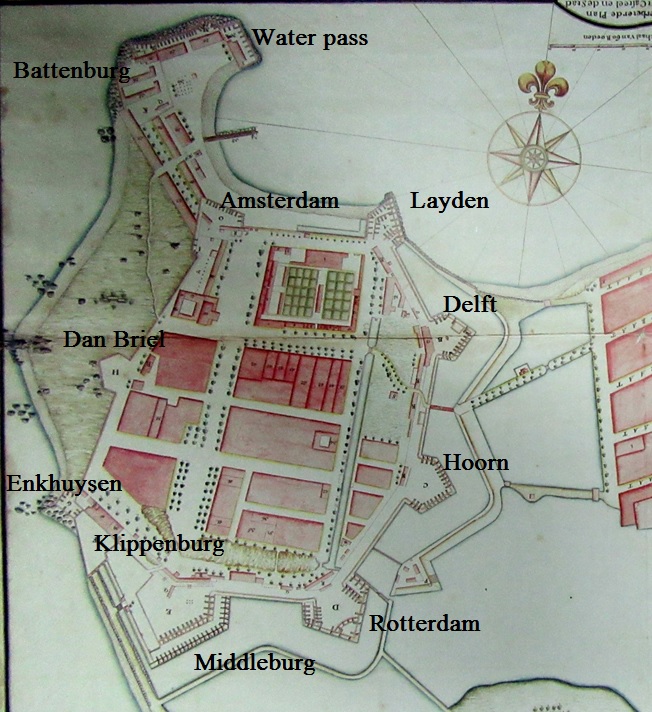
The bastion in the Navy Head Quarters was the bastion Dan Briel, this was a modest bastion which protected the rocky beach along the west coast between Enkhuysen and the Battenburg battery. This bastion was situated on a hill, which was the highest point in the city hence the large rocks and the considerable elevation observed at the present site. This bastion’s apex or the pointed end where the two sides of the bastion meet seemed to have been cut sometime in the late 19th century probably in order to make way for the Galle Buck road, as is evident from a map of 1904; giving it its odd five sided shape today. The bastions where initially built of Kabook and only after 1751 were they built of proper lime and stone. Previously the old British lighthouse and the flag staff was located on this bastion and now built upon it is the office of the Navy Commander.
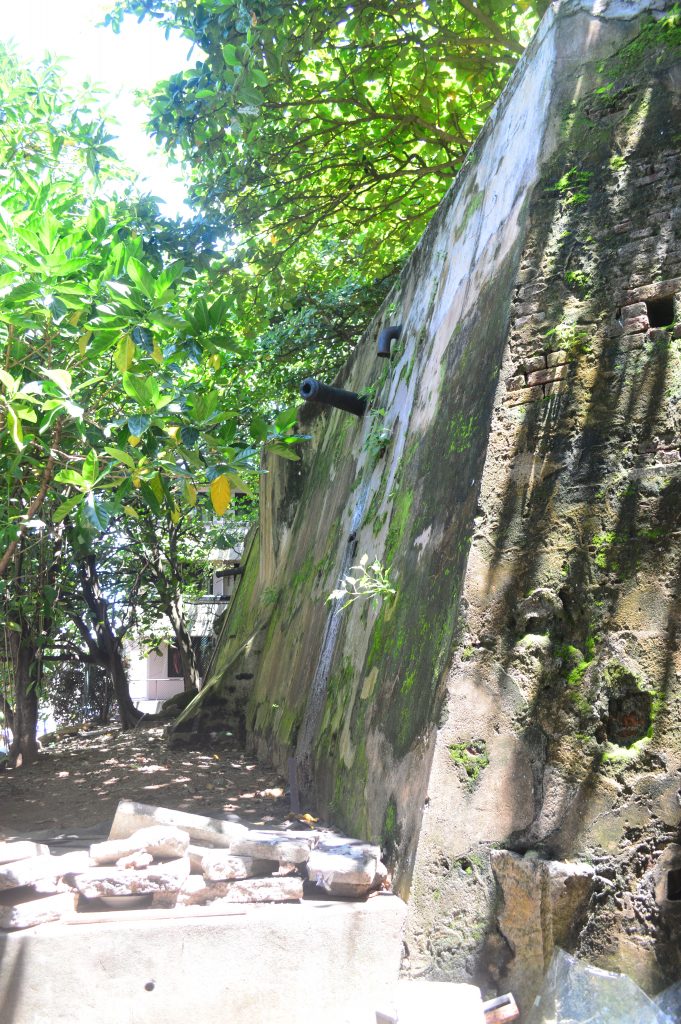
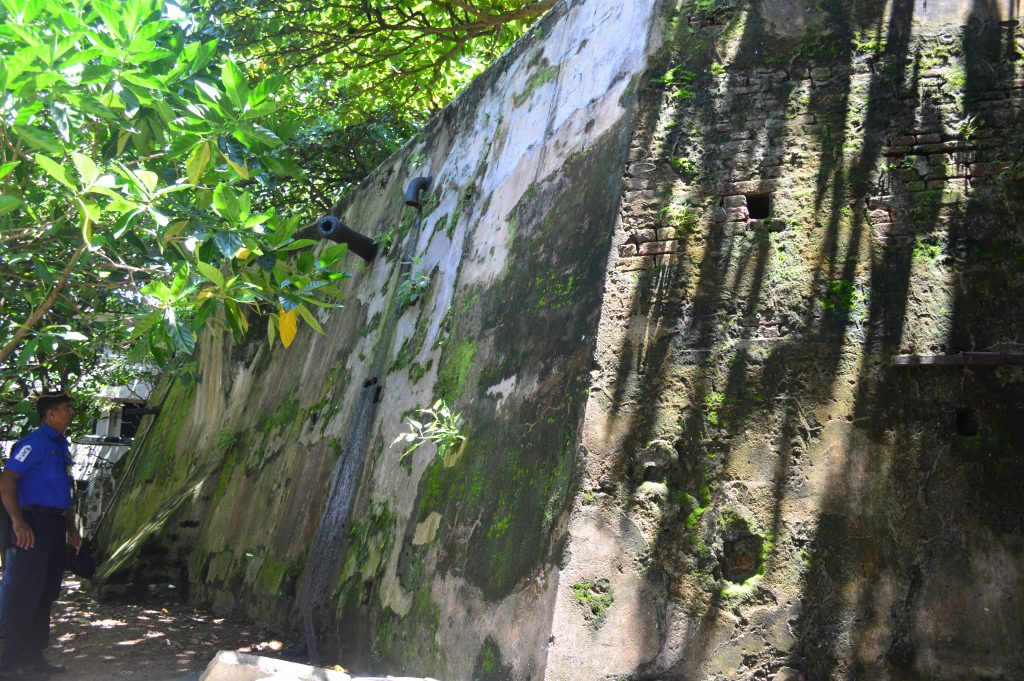
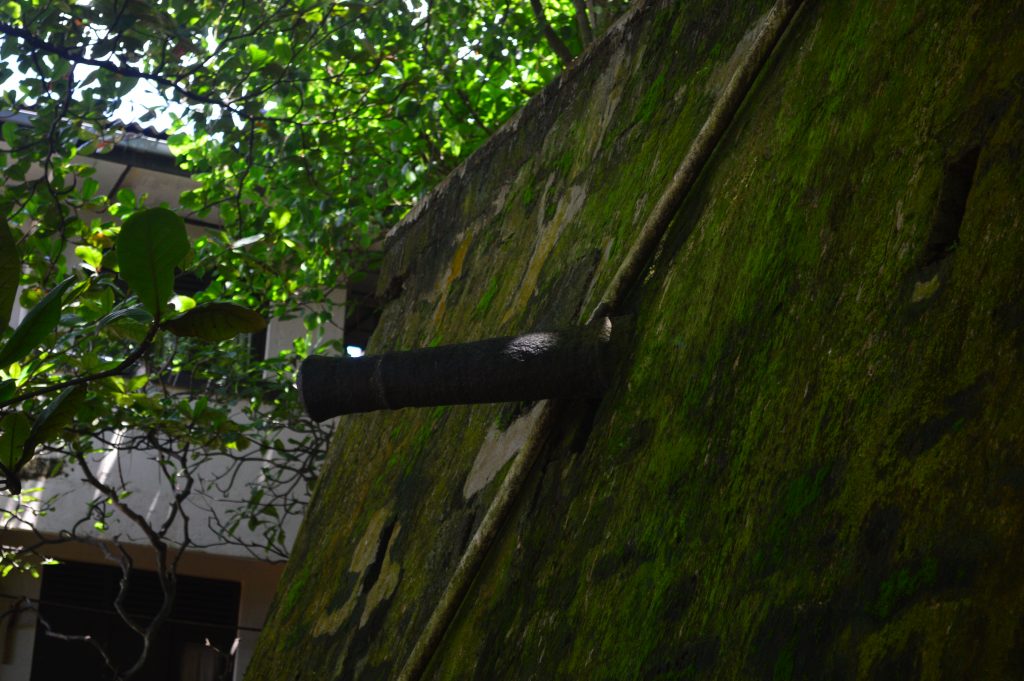
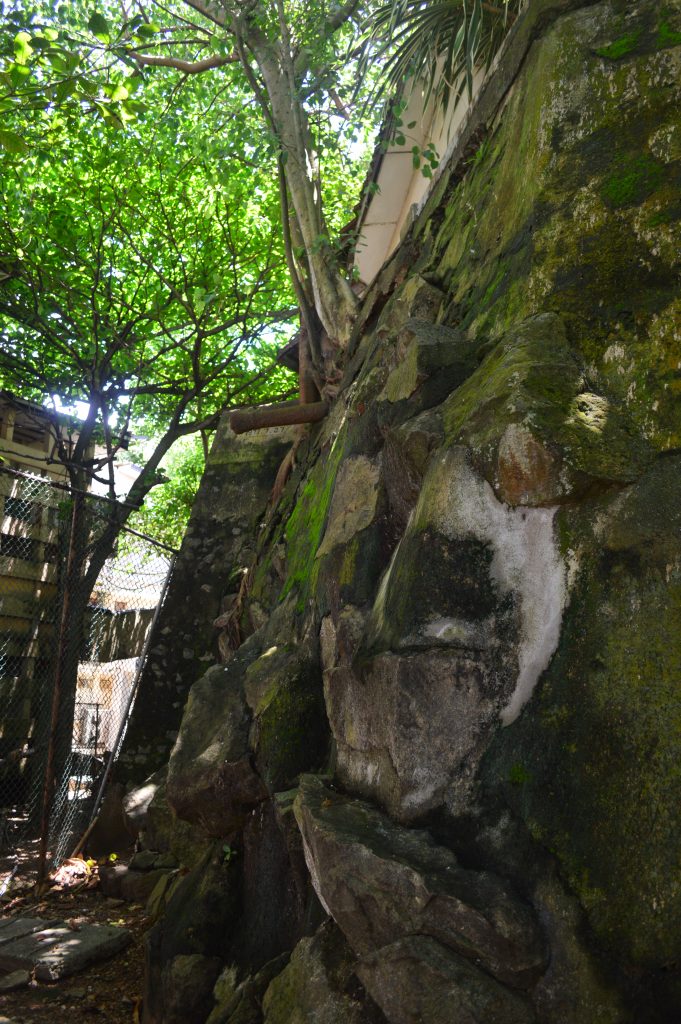
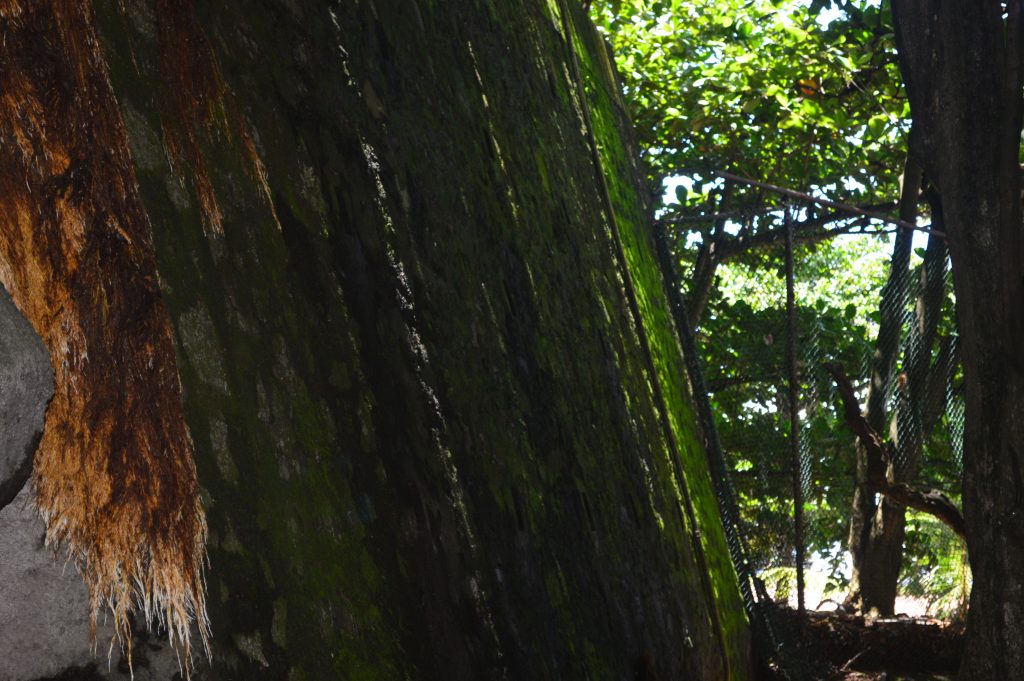
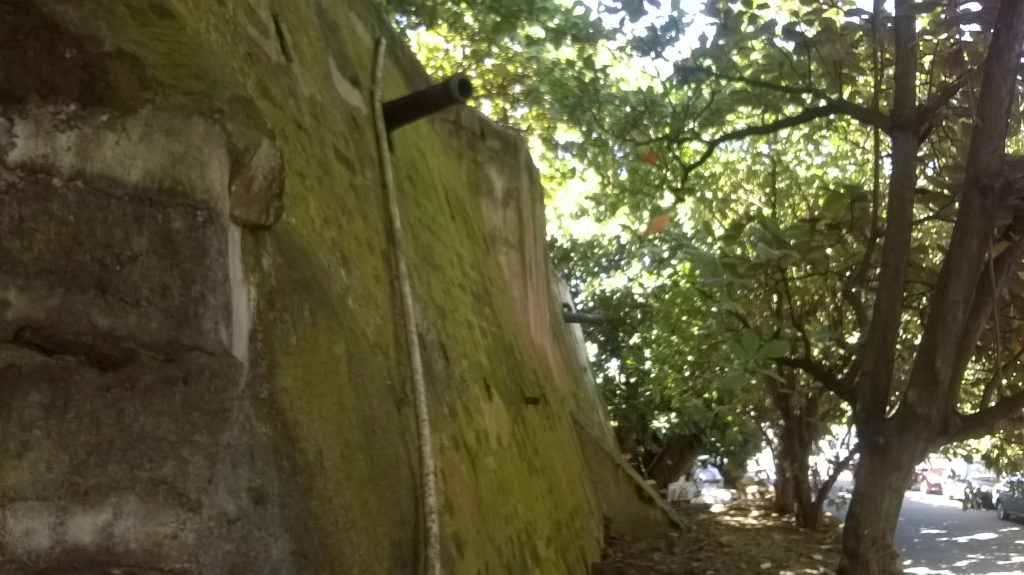
The Postern gate had a fascinating history; the Fort had three main entrances, one being the Delft gate on the eastern ramparts, the other the Galle gate on the south, and the third being the Water gate in the habour. In the old days this small secondary entrance was known as the Slave Port which led to the Kaffirs field which was the land area between the Fort and the sea on the western coast; this is where the Company’s slaves were kept. “Without the walls, between them and the sea are the Huts where near four thousand Slaves, belonging to the Company lye at night…their huts are little, made up with nothing but straw and leaves†is the description given by the German Christopher Schweitzer in the 1680s. Thus this was the small entrance from which the slaves of the VOC entered the Fort to work. The Kaffirs field would now correspond to the buildings of the Navy Head Quarters, Galle Buck road, Chaitya road to the coast (now vanished for the Port City), the slaves of the Dutch were first kept here till they were relocated in the 18th century to a small peninsula in the Beria lake now known as Slave island due to an incident, which is an interesting tale for another time.
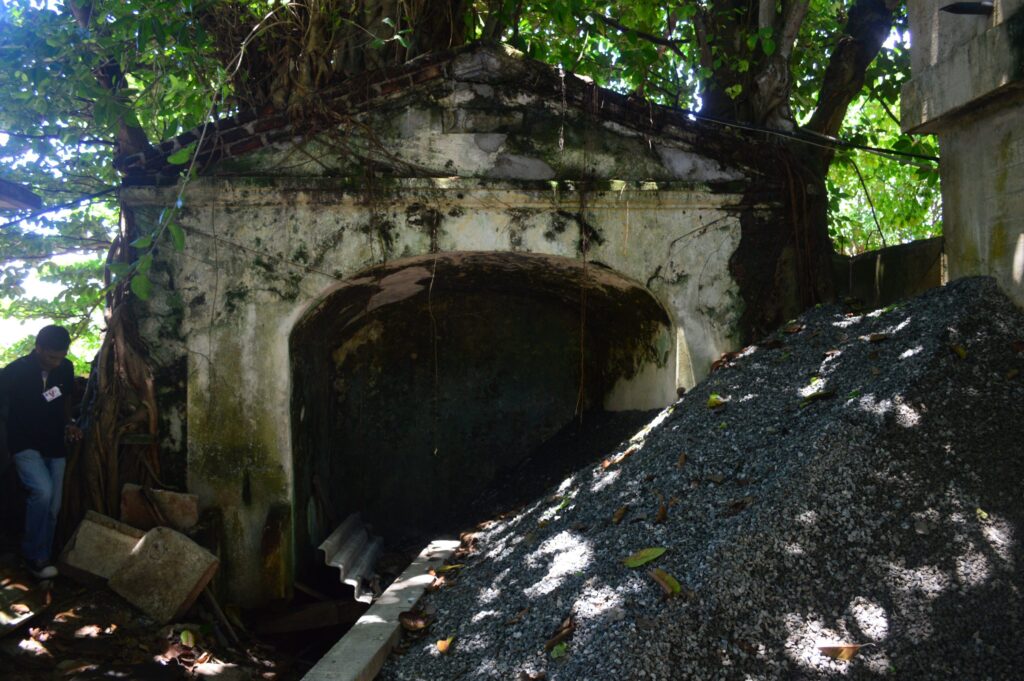
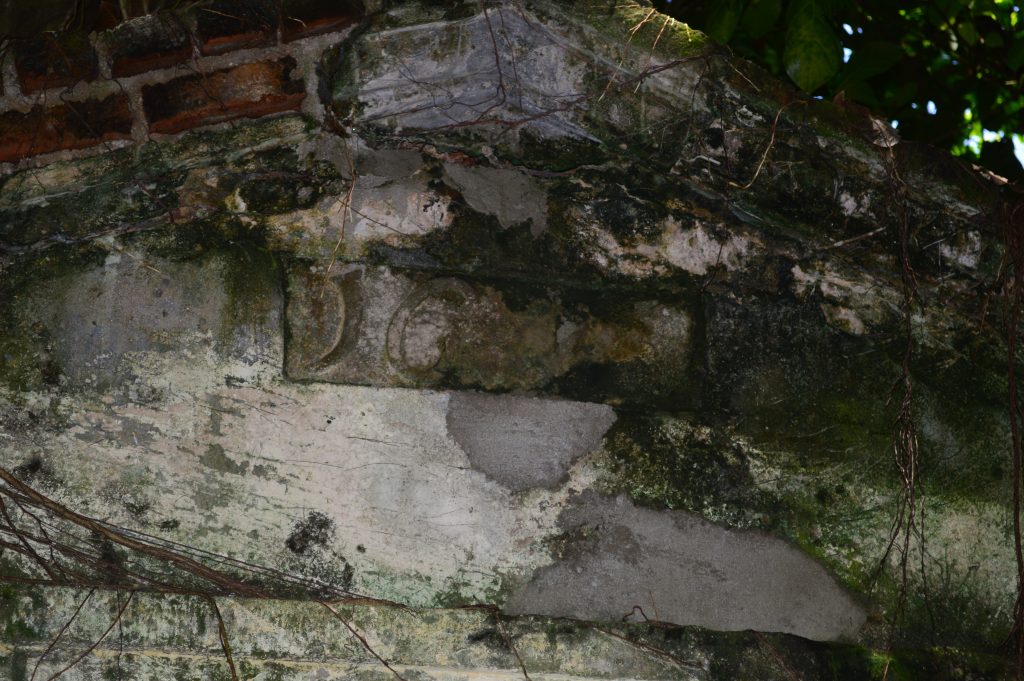
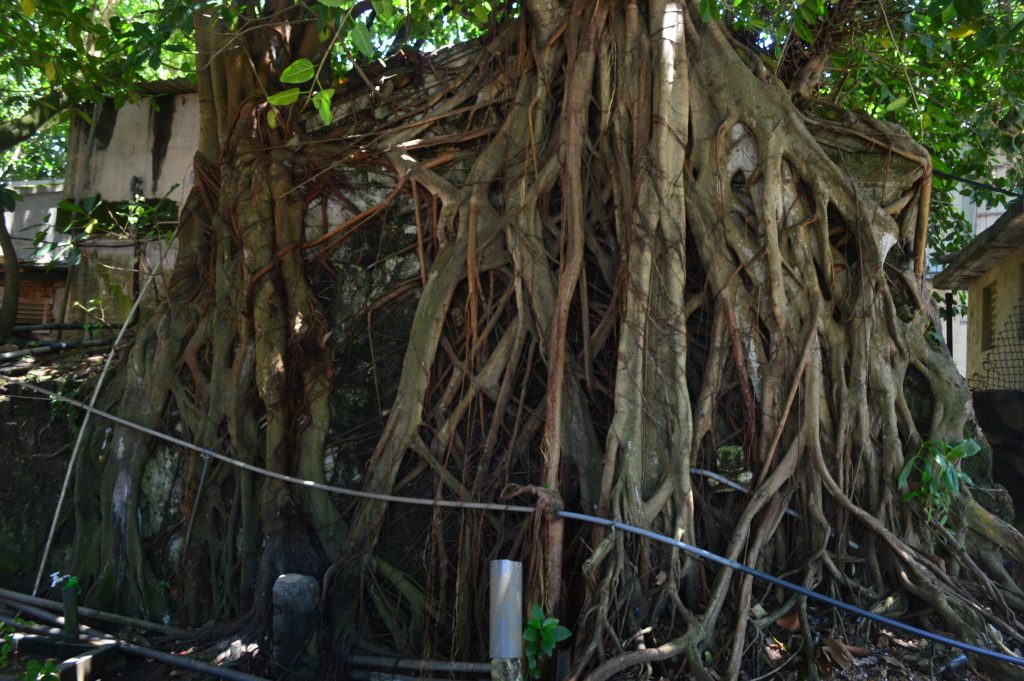
The walls on either side of the Slave Port were the ramparts of the Dutch Fort one, connecting Dan Briel to the Slave Port and the other from the gate to the Amsterdam bastion, but seemed to have lost their shape and size due to the alterations of its surroundings.
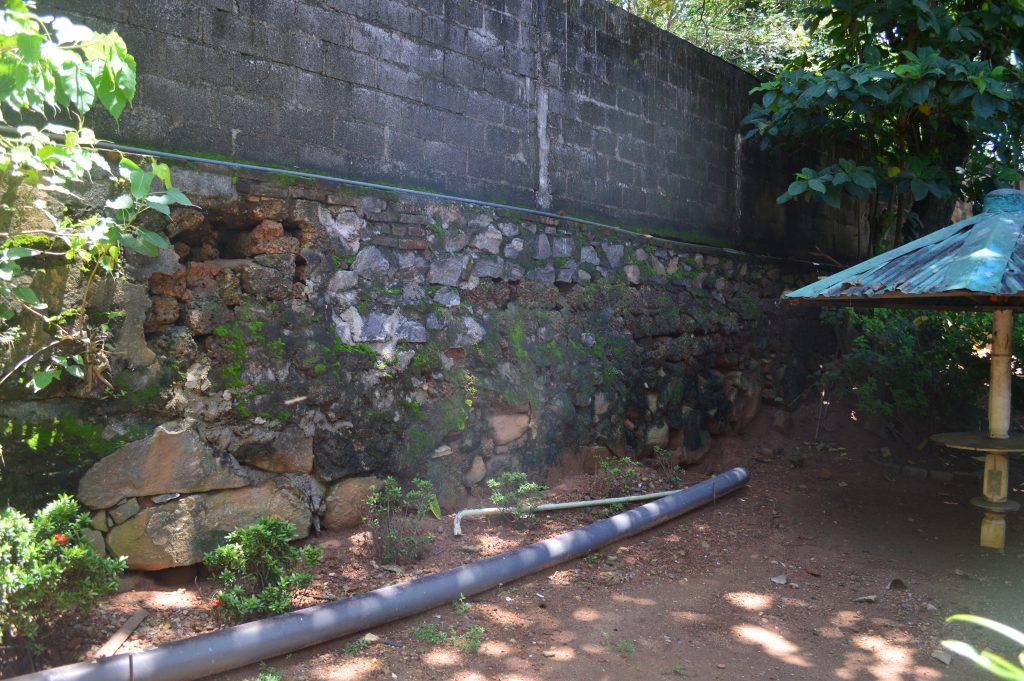
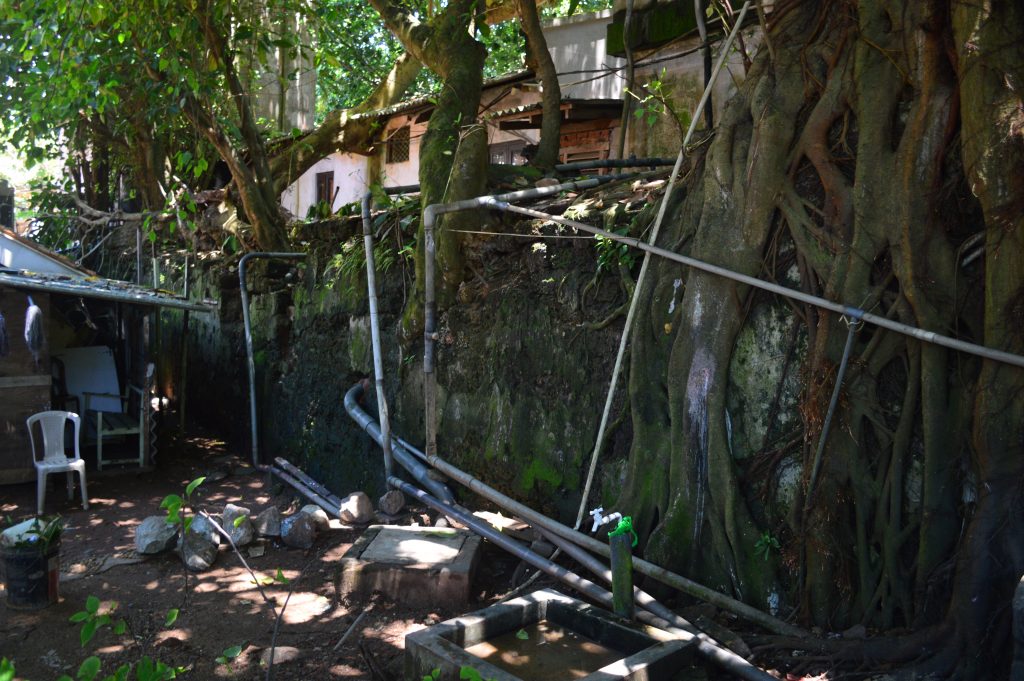
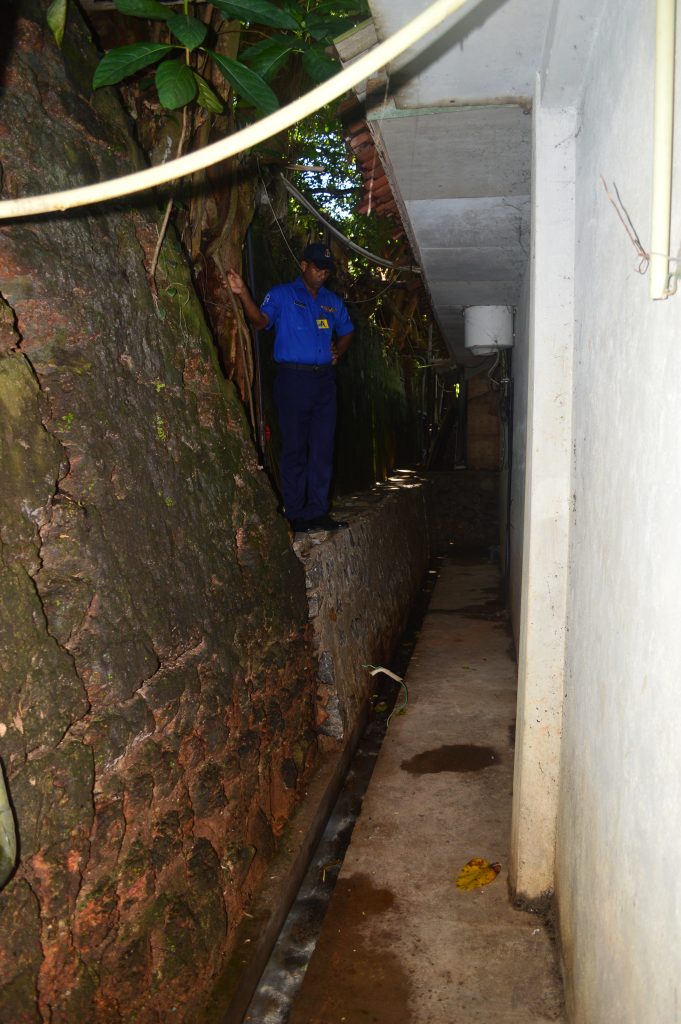
We were speechless at what we had seen, ruins in the heart of Colombo! I was simply amazed to the fact that these ruins are hardly known and not properly conserved. I was overjoyed as to what I had discovered; the ruins of the Dutch Fort but there was more to it than meets the eye, my research further led me to locate more remains amounting to an astounding seven locations.
The next article would feature the rest of the remains of the Fort of Colombo.



It is very intesting. Thanks puthe . Professor Nanadani Karunathilake”s PhD research was on the history of Colombo.
Thanks a lot Sir, Oh that sounds interesting, do you know from where I can see her thesis ?
You can see one entanrance to Colombo Dutch Fort preserved inside Commercial bank premises 21 , Bristol St Colombo 1.
Hi Isuru,
Yes I know, it would be featured in the next article.
I am new here. Good work. Would like to see some articles by Prof. Raj Somadeva.
Welcome ! Thanks and there are some works of Prof. Somadeva, please check our list of Articles.
Nice work, Keep it up!
Thank you very much.
We need to bring out these details of Colombo that link it to its past…………
Very interesting Chryshane. Looking forward to follow up articles.
Fascinating story and your excitement really comes through in the article. Luckily the link sent to me by a Sri Lankan friend in Australia. Like to be posted when next article published.
Please join our mailing list to get notified when a new article is published on out site. Please note you have to confirm your email address using the confirmation email after joining the list.
https://www.archaeology.lk/contact-us/subscribe-to-mailing-list
Interesting .about fifteen years ago the wall was visible to the road. The connection to Amsterdam was there on the site of the present extended port development. I was invited to advised the consultants. I recommended that the entrance to the port should be changed, so that the remains of the wall could be preserved and not demolished. They said no. I pulled out. I recall it was concluded by Somasiri Devendra who may have photographs of the walls and pill box in question.
Dear Mr, de Vos,
Thanks a lot for your feedback. I was not aware of this fact. It is sad indeed. I will contact Mr. Devendra and check if he has any. He had showed me photographs of the old gate and warehouses within the port.
Awesome, awesome voyage of discovery! Criminal that these treasures have not been preserved.
Can’t wait for your next article!
Hi Anne,
Thanks and glad you enjoyed the read. Yes it is truly sad that no conservation has been carried out.
We are working on it.
Thanks Chrysane and team.
This is an incredible revelation of a significant remnant of the Portuguese era through painstaking work done by the researchers.These are priceless archaeological artifacts although the proper authorities do not seem to have prioritized the importance of restoring them which if it had been done would have been fantastic from many perspectives including from a tourist attraction viewpoint.
I was on the edge of my seat trying to glean all the details.
Looking forward to the next episode where hopefully there will be some details of Gordon Gardens and the Old Cemetery I remember walking through as a curious schoolboy in the 1950s which of course was out of bounds to the public during the ethnic strife period but now thankfully re-opened.
Well Done!
Hi Sunimal,
Yes, this was an interesting voyage of discovery for me.
Regarding the next episode, I focused my research specifically on the fortifications and hence it does not contain anything on the Gordon Gardens. It will contain the remaining locations of the fortifications.
If the Dutch Government is appraised of this discovery they might fund the restoration as they have done in Jaffna.
Hi Mahen,
Thanks for your feedback.
Yes, that is a possible way of funding the eventual conservation of these sites.
I have informed the Department of Archaeology regarding them. Will be working on it in the coming months.
What an Amazing job of discovery. Another Howard Carter indeed. your excitement is palpable. thank you for your inquisitiveness, to go after your hunch & for all the research & study you have & will further commit to this cause. A very worthy task. looking forward to more on this subjects. T
Dear Team,
Keep up the good works.
Not quite a Howard Carter but a simple appreciator of the subject of Archaeology in a world rich in its essence..
I lived in Anuradhapura many years ago and was involved in the Cultural Triangle work there with an Archaeological Overseer Stationed at Mihintale.It was a fascinatiing experience for me to become aware of the skills of the Ancient Sinhala Kings , their Engineering and Architectural expertise and to study their marvellous feats which probably inspired my archaeological curiosity. Needless to say – our Homeland is a treasure trove of artifacts relating to ancient times for millennia and something to be proud of.
Hi Tilaka,
Thanks a lot! Yes, there will be another article coming.
I have delivered two public lectures on this topic in the past. There would be one coming up again in September.
Will keep you posted.
Chryshanne Mendis
I am a nobody in your field or indeed in any other. But not lacking in interest and very much appreciate the passion in which you wrote the article on The Fortress of Colombo and your findings. Reading it is like a thrilling
novel; perhaps even more so as it is our history and heritage.
Thankful to individuals like you who contribute so much in such a positive way, when all around we see such negativity. Very much look forward to reading more . God bless you
Thank you for your reply and compliments.
In your right you are like the rest of us whose passion for archaeology must surely be knowledgeable to encompass many parameters quite admirably.
The world is full of the remnants of great ancient civilization displayed in places like- Machu Pichu Peru, Angkor Wat- Cambodia, Temple of the Aztects- Mexico, Ajantha Caves India, Valley of the Kings- Egypt, the list goes on and those of our own Anuradhapura- Dambulla- Polonnaruwa, Kandy and other Lankan periods that provide an exciting aspect to our thirst for knowledge in this field with the related artifacts. They are virtually endless.
I am just a beginner in the exploration of these marvels as I continue my journey.
Be inspired to continue yours with blessings and dedication.
Sunimal
Hi Charmaine,
Thanks a lot for that lovely comment, really appreciate it.
Yes await more 😉
God bless you too.
The harbour gate named Leyden Bastion, stands where the old bastion stood once. The gate itself is an old structure, the oldest existing gate in the port from the era of bullock carts. May be it is a part of the old bastion repaired after demolition.
Hi Michael,
Thanks for the info. I did not know that the Layden bastion gate was the oldest. However it was definitely not part of the bastion. It is clearly mentioned in British records that the bastion was demolished and subsequently no maps from the 1870s show it. Also it would have been in the location of the old passenger terminal in front of GOH. The road named Layden Bastion road which runs near the gate would have run parallel or on the lines of the rampart leading towards the bastion.
But thanks again for your concern, it is important people share their views and ideas, because sometimes even I may have missed things.
Cheers,
Chryshane
Beautiful.. very interesting ,informative and educational article..looking forward for more…Goodluck.